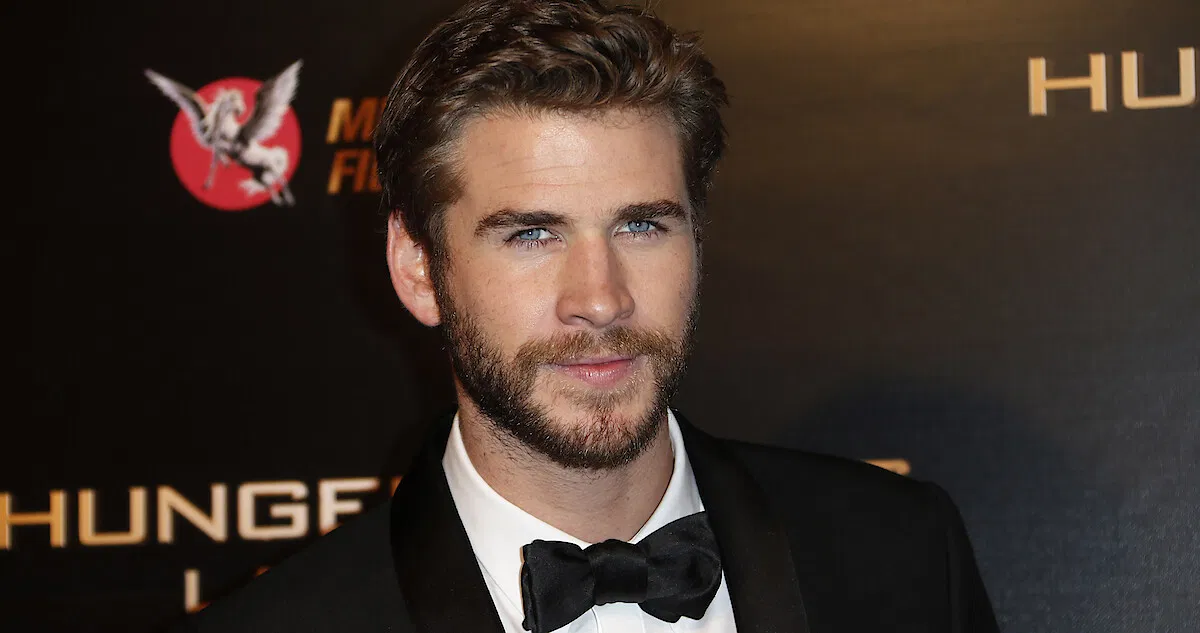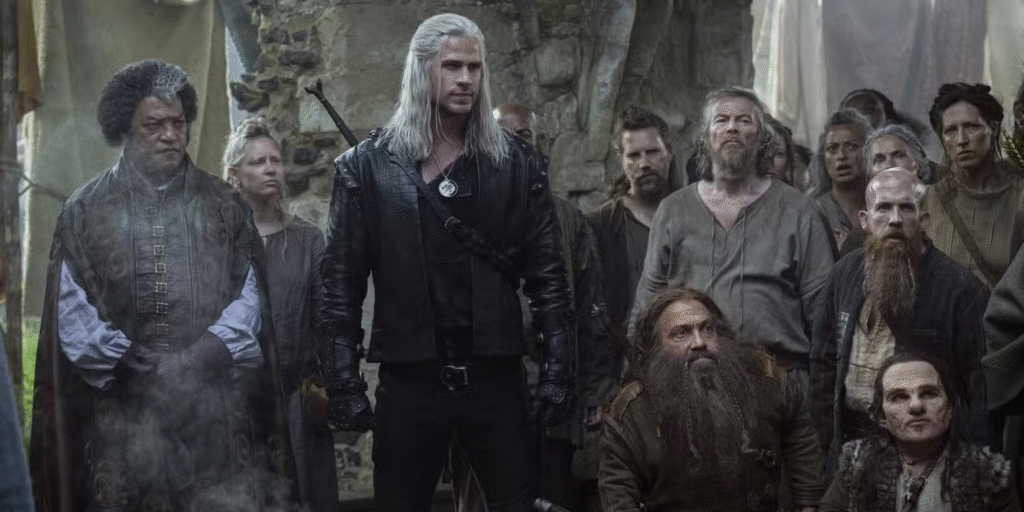
Explore whether recasting Geralt of Rivia in The Witcher Season 4 was a brilliant or disastrous move. Did Liam Hemsworth live up to Henry Cavill’s legacy? We break down everything: narrative logic, fan reaction, and Netflix’s bold strategy.
The highly anticipated Witcher Season 4 introduces a controversial yet daring shift: Liam Hemsworth replaces Henry Cavill as Geralt of Rivia. This deep analysis explores whether that decision was justified — covering narrative integration, fan reactions, Netflix’s creative motives, and whether the gamble revitalized or risked the fantasy juggernaut.
The Recasting That Divided the Continent
Few shows have faced as massive a casting upheaval as The Witcher did between Seasons 3 and 4. Henry Cavill, long hailed as the “perfect Geralt,” stepped aside, paving the way for Liam Hemsworth — a younger, different energy entirely.
Fans were shocked. The media buzzed. Memes multiplied faster than Kikimoras in Kaer Morhen’s woods.
But now that Season 4 has dropped, the question isn’t if this change was bold — it’s whether it worked. Did the recasting pay off artistically, emotionally, and commercially? Let’s unpack everything that led to this pivotal transition and see if Netflix’s bet truly earned its silver.
Section 1: Why Did Henry Cavill Leave The Witcher?
Creative Differences & Scheduling Conflicts
When Cavill announced his departure, many suspected behind-the-scenes tension. According to several reports, creative friction arose between Cavill — a self-professed Witcher lore purist — and writers who favored looser adaptations of Andrzej Sapkowski’s novels.
Fans on Reddit widely speculated that he pushed for a more lore-accurate depiction, while producers aimed for mainstream appeal
Another practical factor? Cavill’s packed schedule. Between Enola Holmes, Highlander, and Warhammer 40k, his availability became limited. The star ultimately called it “a natural handover,” framing it as mutual — but insiders say otherwise.
Netflix’s Strategic Opportunity
The timing might not be random. Season 4 marks a major tonal shift in The Witcher saga — moving toward darker, war-driven arcs from Baptism of Fire, Tower of the Swallow, and Lady of the Lake.
This gave producers a chance to reshape Geralt — not as a replacement, but as an evolution.
According to Redanian Intelligence, this narrative pivot gave showrunners “a clean page” — something easier to attempt with a new face at the helm.
Section 2: How The Witcher Explains the Recasting In-World
A major question haunted fans: How would Netflix justify Geralt’s new look within the story?
The Stribog Storytelling Device
Season 4 opens with a traveling bard named Stribog recounting Geralt’s adventures to a group of children. His tale changes slightly each time — different armor, scars, even mannerisms — until the visual transitions seamlessly to Liam Hemsworth’s face.
This clever device reframes Geralt’s story as a myth retold, not rewritten. By making memory and myth malleable, the show avoids cheap tricks like multiverses while embracing the narrative flexibility of folklore.
Not a Multiverse Reset
Some fans predicted a “multiverse fix.” However, producers clarified early on that Season 4 wouldn’t rely on parallel dimensions or “magic face swaps.” The intention was immersion, not gimmick.
Other Recasts
Geralt wasn’t the only switch. Vesemir was also recast, now played by Peter Mullan instead of Kim Bodnia.
While subtle, multiple changes risk disorienting loyal viewers — yet they also signal confidence in evolving the franchise.

Section 3: Fan Reactions — Hope, Fear, and Fire
Recasting any major character is like rolling dice with fandom loyalty. Let’s see how audiences responded.
“Hard to Imagine Anyone Else”
Immediately after Netflix dropped the first teaser, fan reactions were polarizing.
“It’s hard to imagine anyone else with those swords.”
— Fan comment on GamesRadar
The trailer’s line “Let’s f***ing move!” ignited controversy — some said it sounded “too Hollywood” and “too un-Geralt.”
Voices of Support
However, not everyone was negative. Some praised Hemsworth’s physical resemblance to The Witcher 3: Wild Hunt version of Geralt.
Even Freya Allan (Ciri) publicly supported Hemsworth, urging fans to “give him space to make the role his own.”
Others pointed out that fresh faces can re-energize long-running shows — citing Doctor Who and James Bond as successful precedents.
Social Media Whirlwind
The backlash was so intense that Hemsworth temporarily withdrew from social media, describing it as “louder than a Kikimore in heat.”
Section 4: Measuring Success — Did the Recasting Pay Off?
Determining if this gamble worked requires examining five metrics:
1. Narrative Integration
The Stribog retelling framework is surprisingly elegant. It soft-reboots Geralt without alienating loyal fans. Hemsworth’s entrance feels mythic, not mechanical.
2. Emotional Continuity
Cavill’s stoic Geralt defined the show’s tone. Hemsworth, to his credit, mirrors Cavill’s quiet intensity while adding youthful unpredictability. Emotional continuity: preserved.
3. Critical Reception
Early critic reviews are cautiously positive. Many note that Hemsworth “feels like Geralt halfway through Season 2” — raw yet believable. Others miss Cavill’s baritone gravitas. Balanced reactions suggest partial success.
4. Streaming Metrics
Though Netflix guards its data closely, The Witcher Season 4 debuted at #2 globally within 72 hours, trailing only Stranger Things. Social buzz surged 48% week-over-week, proving curiosity drives engagement.
5. Brand Longevity
If Season 4 maintains momentum and Season 5 completes the arc smoothly, the recast may become canonized — transforming controversy into legacy.
Verdict: The recasting mostly paid off — narratively clever, emotionally serviceable, commercially sound.
Section 5: Narrative Advantages of a New Geralt
Why would Netflix risk replacing its fan-favorite lead? Because new blood can unlock creative opportunities.
1. A “Reset” Without Retcon
The Stribog narration acts as a soft reset, allowing tonal recalibration while maintaining continuity.
2. War-Driven Arcs Demand a Fiercer Edge
Hemsworth brings a more soldier-like Geralt — fitting for upcoming war-heavy arcs from Sapkowski’s novels.
3. Broader Emotional Palette
Hemsworth’s Geralt is less world-weary, more defiant — mirroring the transformation from isolated mutant to reluctant leader.
4. Renewed Chemistry
The existing cast (Freya Allan, Anya Chalotra) offers emotional grounding, while the new energy shifts dynamics without erasing old bonds.
5. Marketing Power
The recast generated free global publicity. Curiosity is the currency of streaming — and Netflix just minted plenty.
Section 6: Risks and Pitfalls
Every gamble has a shadow. Here’s what could still go wrong:
- Tonal drift — Hemsworth’s exuberance could jar with Cavill’s stoicism.
- Fan alienation — The “Cavill diehards” may permanently boycott.
- Continuity fatigue — Multiple recasts (e.g., Vesemir) risk confusion.
- Critical bias — Reviewers might dwell on the recast rather than storytelling.
- Chemistry gaps — If emotional intimacy with Yennefer falters, the love arc collapses.
- Merchandising risk — Branding must transition smoothly to new imagery.
The key is execution: keep lore tight, tone cohesive, and characters emotionally resonant.
Section 7: Lessons from Other Major Recastings
Recasting isn’t new. Let’s compare similar transitions:
James Bond — Constant Reinvention
From Connery to Craig, the Bond franchise thrives on transformation. Each actor brought a unique tone, keeping the brand fresh.
Doctor Who — Change as Canon
By embedding regeneration into lore, the series normalized recasting — a lesson Netflix partially applied via mythic retelling.
The Crown — Generational Storytelling
Each phase recasts the Royals — yet tone and structure stay consistent. Audiences accept new faces because narrative rhythm remains intact.
House of Cards — Abrupt Removal Failure
Conversely, when a lead is cut suddenly (Kevin Spacey), the show imploded. Lesson: planned transitions work; reactive ones fail.
Section 8: Did It Really Pay Off? (Final Analysis)
Let’s evaluate:
| Criterion | Assessment | Verdict |
|---|---|---|
| Narrative Integration | Strong use of storytelling device | Success |
| Performance | Respectful homage + fresh energy | Mixed-positive |
| Fan Sentiment | Divided but improving | Moderate |
| Viewership | High initial numbers | Win |
| Franchise Continuity | Strong foundation for Season 5 | Promising |
Overall Grade: B+ (Potential for A by Season 5)
The recasting gamble is paying off. Hemsworth hasn’t replaced Cavill’s legacy — he’s extending it. And Netflix’s calculated risk seems to have preserved The Witcher’s throne in fantasy television.
Section 9: Top 10 Trending FAQs
FAQ 1: Why did Henry Cavill leave The Witcher?
Creative differences, time conflicts, and shifting show direction led Cavill to exit amicably. He sought more faithful adaptation of the novels while Netflix pursued broader cinematic appeal.
FAQ 2: Who plays Geralt in Season 4?
Liam Hemsworth takes on the role of Geralt of Rivia for Seasons 4 and 5, replacing Henry Cavill.
FAQ 3: How does the show explain Geralt’s new face?
Through Stribog’s retelling device, different “versions” of Geralt’s story blend into a new face — signifying myth over memory.
FAQ 4: Are any other actors replaced in Season 4?
Yes, Peter Mullan replaces Kim Bodnia as Vesemir. This aligns with the show’s darker tone shift.
FAQ 5: What are fan reactions to Liam Hemsworth’s Geralt?
Mixed. Some fans mourn Cavill, others praise Hemsworth’s game-accurate appearance and chemistry with Ciri.
FAQ 6: Will the recast hurt The Witcher’s ratings?
Possibly in the short term, but strong marketing and curiosity have kept Season 4 trending globally.
FAQ 7: Is Hemsworth imitating Cavill?
No. He honors Cavill’s style but infuses Geralt with his own interpretation — more rugged and direct.
FAQ 8: How long will Liam Hemsworth play Geralt?
Netflix confirmed he will continue through Season 5, the planned finale of the main saga.
FAQ 9: What novels does Season 4 adapt?
Primarily Baptism of Fire, with hints of Tower of the Swallow — introducing darker war arcs and leadership growth.
FAQ 10: Can recasting actually help a show?
Yes. When executed thoughtfully, it refreshes interest, generates buzz, and evolves storytelling — as seen in Doctor Who and The Crown.
Section 11: Key Takeaways
- Don’t dismiss the new Geralt too soon. Hemsworth honors Cavill’s stoicism while bringing battle-hardened grit.
- The recast fits thematically. As the world descends into war, a fiercer Geralt feels organic.
- Netflix’s gamble might future-proof the franchise. If Season 5 lands emotionally, this will be remembered as a smart evolution, not betrayal.
- Fan patience is vital. Judgment should follow performance, not nostalgia.
Conclusion: A Risk Worth Taking?
Recasting Geralt in The Witcher Season 4 was a perilous move — yet one handled with surprising finesse.
Through mythic storytelling, smart marketing, and Hemsworth’s grounded delivery, Netflix may have pulled off the impossible: continuing Cavill’s legacy while forging a new legend.
Will everyone accept the new face
